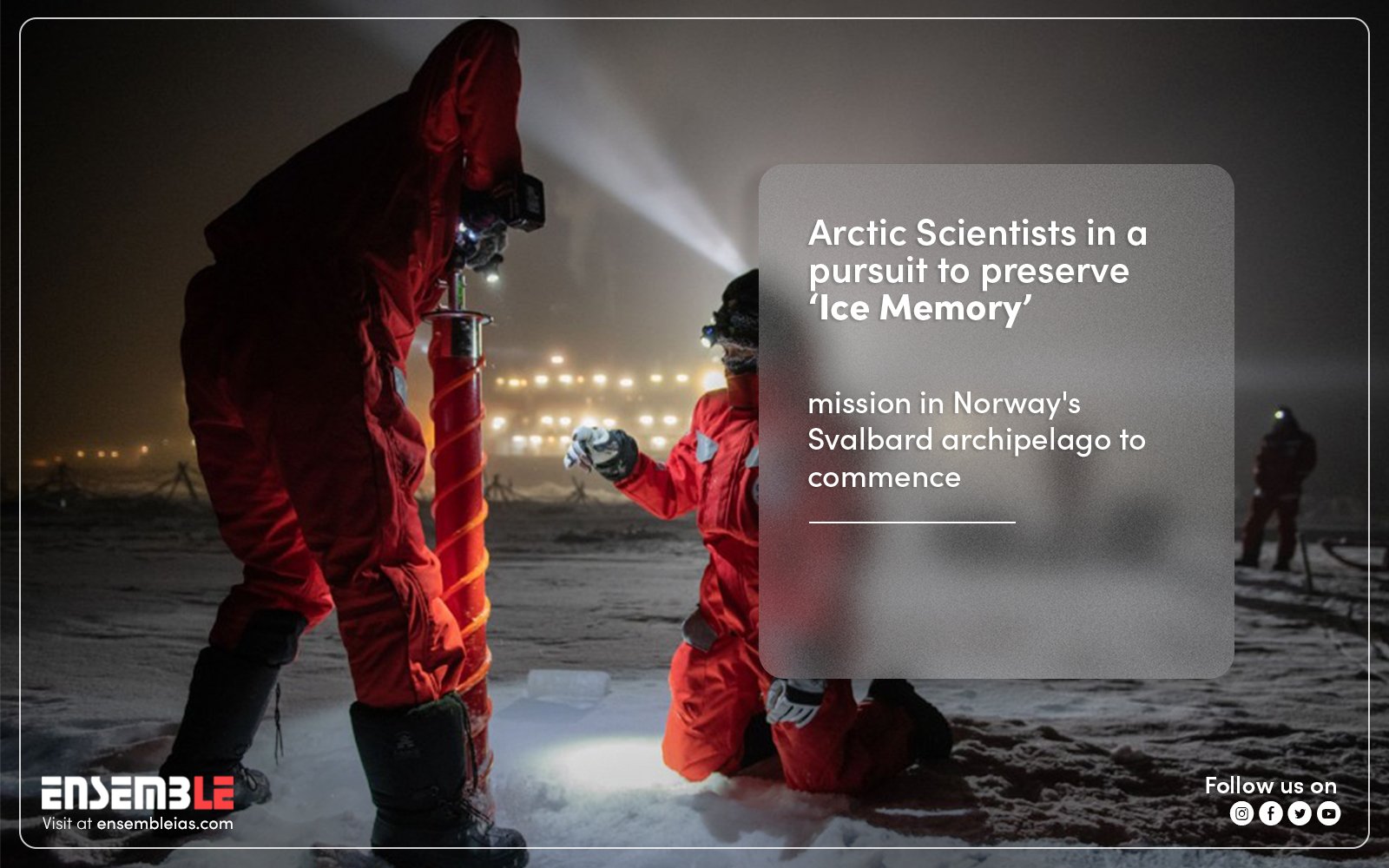Arctic scientists are currently on a mission to extract ice samples from ancient layers for analysis before they melt away due to climate change. The ice cores contain frozen geochemical traces that date back three centuries, providing valuable data about past environmental conditions.
– The Italian, French, and Norwegian researchers have set up camp in Norway’s Svalbard archipelago for a race against time to preserve the ice records.
Let’s dive into the importance of ‘Ice Memory,’ the current mission in Norway, and its implications.
Why is it in the News and generating Headlines?
In a mega surprising move, Scientists in the Arctic are all prepared to start drilling to save samples of ancient ice for analysis before the frozen layers melt away due to climate change, as stated by the mission organisers.
The current mission in Norway’s Svalbard archipelago is in the news because of its significance in preserving crucial ice records. It has caught the attention of scientists and the public alike as it highlights the pressing need to preserve the rapidly disappearing ice caps. With the Arctic warming between two to four times faster than the global average, it is a race against time to save the ice samples, which are crucial to understanding past environmental conditions.
Understanding the ‘Ice Memory’
The ice cores extracted by scientists contain frozen geochemical traces that provide valuable information about the Earth’s past.
– These ice samples preserve crucial information about climate, atmospheric composition, and air pollution that date back centuries.
As ice melts, it changes the geochemical records preserved in ancient ice beneath, making it essential to extract ice samples as soon as possible. The ice samples provide a unique opportunity to study the Earth’s past, helping researchers understand how the climate has changed over time and how it may change in the future.
What Do the Scientists Have to Say About This?
Jerome Chapellaz, the president of the Ice Memory Foundation, states that ice scientists are seeing their primary material disappear forever from the surface of the planet. With human-caused carbon emissions warming the planet by 1.1 degrees Celsius since the 19th century, it is crucial to preserve the ice samples for future generations of scientists. He further added that the eight specialists on the mission have set up camp in the crevasse-ridden Holtedahlfonna ice field and plan to start drilling on Tuesday. They will work for three weeks in temperatures as low as minus 25C (-13 Fahrenheit), cutting and pulling out a series of cylinders of ice, each one meter (three feet) long and 10cm (four inches) wide.
The Mission and the Objectives
The mission’s primary objective is to extract ice samples and store them in an “ice memory sanctuary” in Antarctica for future generations of scientists to study. One set of ice tubes will be used for immediate analysis while a second set will be sent to Antarctica for storage in an “ice memory sanctuary” under the snow, where the samples will be preserved for future generations of scientists.
– They will work for about 3 long weeks in very low temperatures, as low as minus 25 deg C.
– The whopping amount spent on the mission is about €700,000 (S$1 million) would be partly funded by the Italian research ministry.
– The ice memory sanctuary will ensure that the ice samples are preserved for future studies, even if the surface of the planet loses all its ice.
With the current rate of climate change, it is vital to preserve these ice samples to understand how our planet has evolved and how it may change in the future.
A look into Ice Memory Foundation
The Ice Memory initiative aims to collect, save and manage ice cores from selected glaciers currently in danger of degradation or disappearance, with their yielded information for decades and centuries to come. Safeguarding these ice cores is key to providing scientific advances and knowledge that will ultimately contribute to the well-being of humanity.
The Arctic scientists’ current mission to preserve ‘ice memory’ highlights the importance of understanding past environmental conditions. The ice cores provide a unique opportunity to study the Earth’s past, which helps us understand the changes that have occurred and may occur in the future. The current mission is a race against time to preserve the rapidly disappearing ice caps and extract ice samples before they melt away due to climate change. The ice memory sanctuary will ensure that the ice samples are preserved for future studies.




